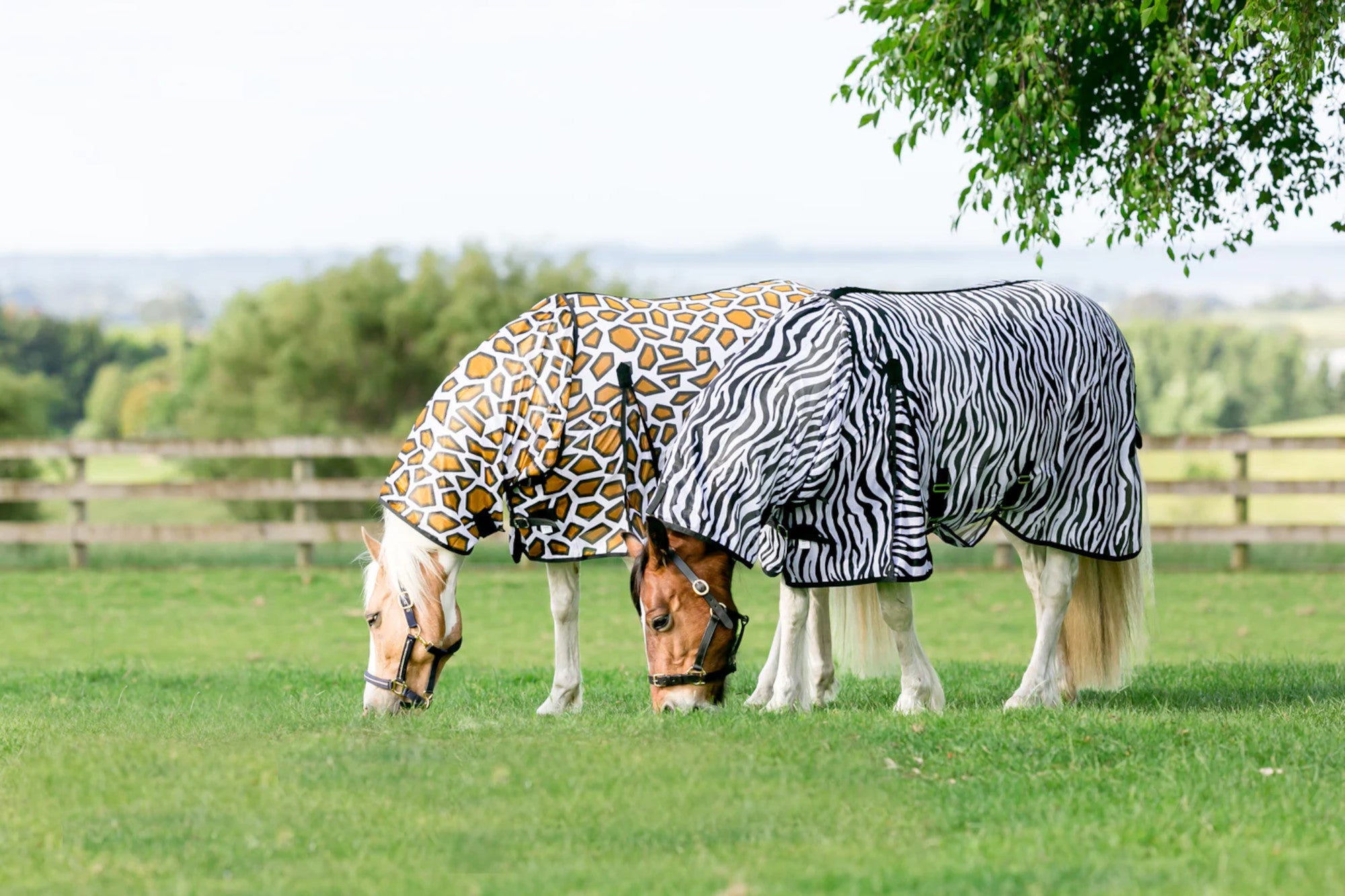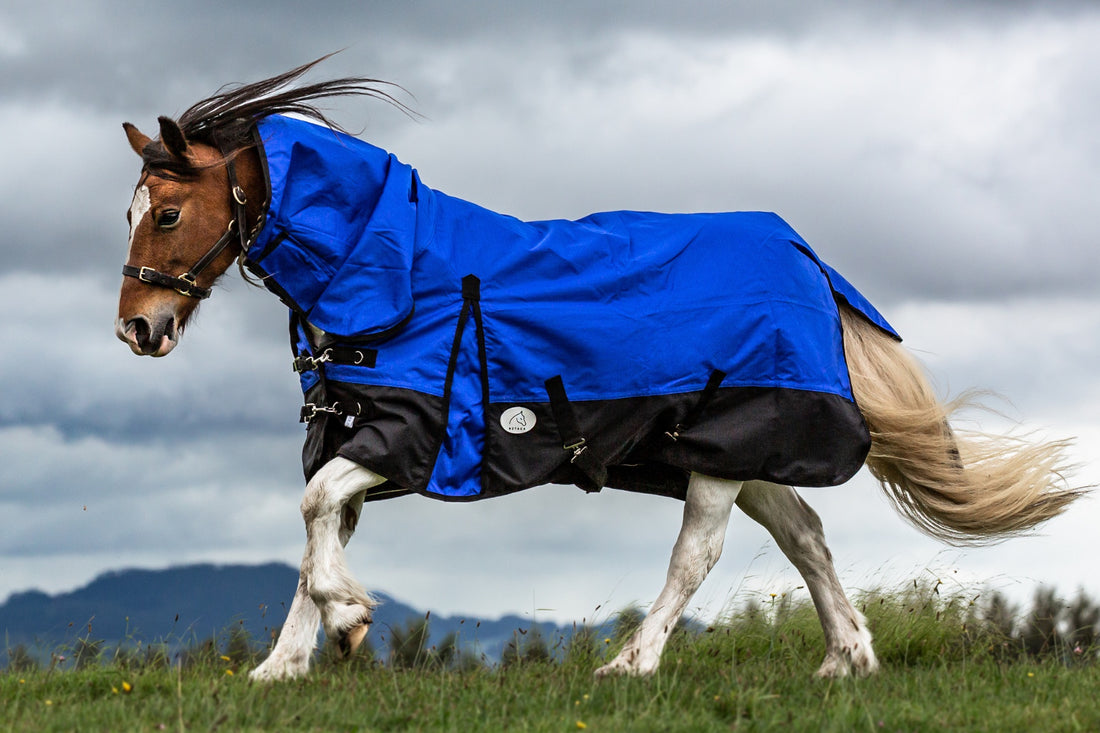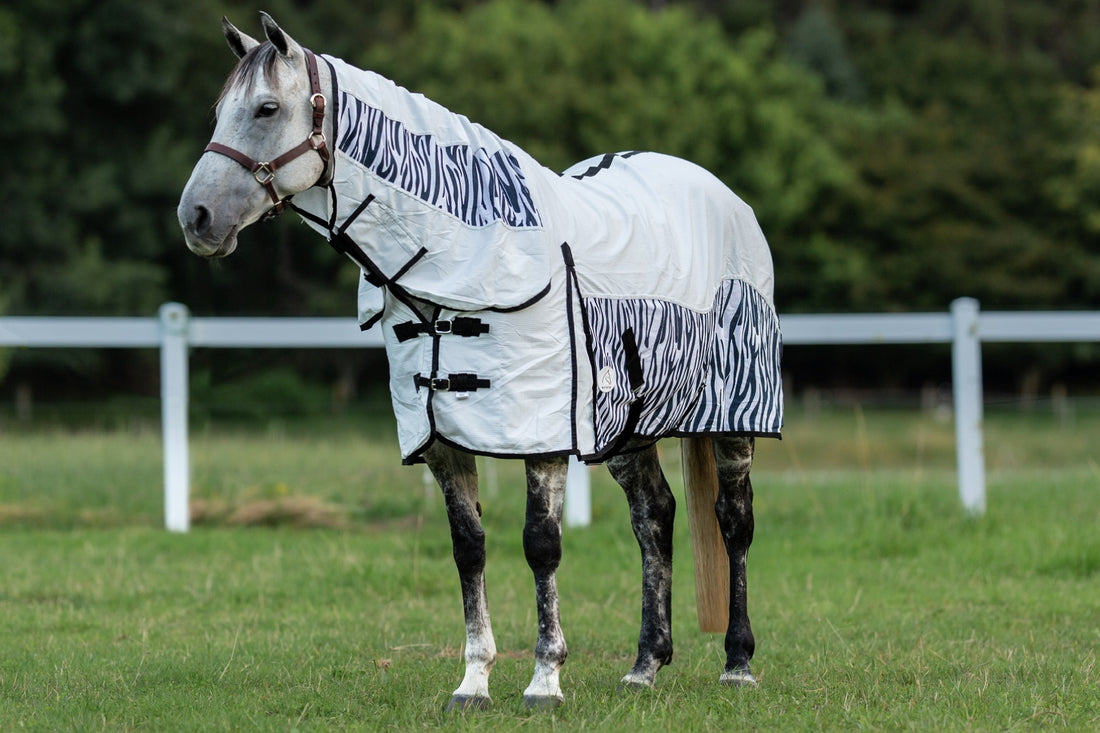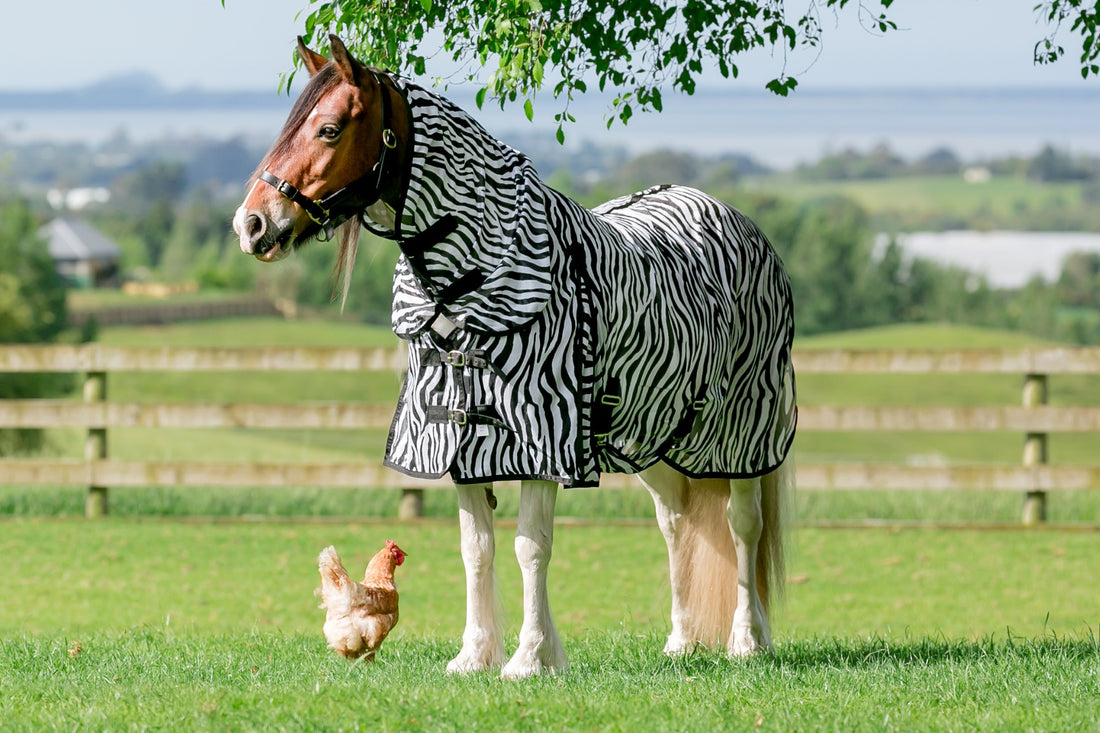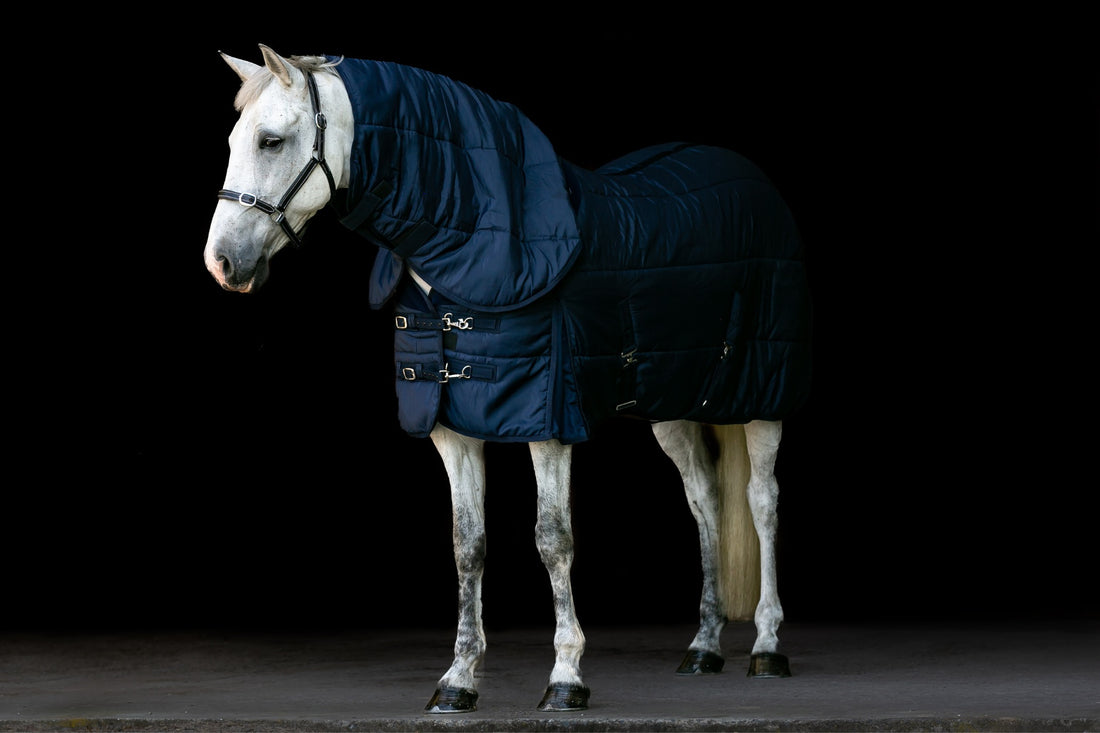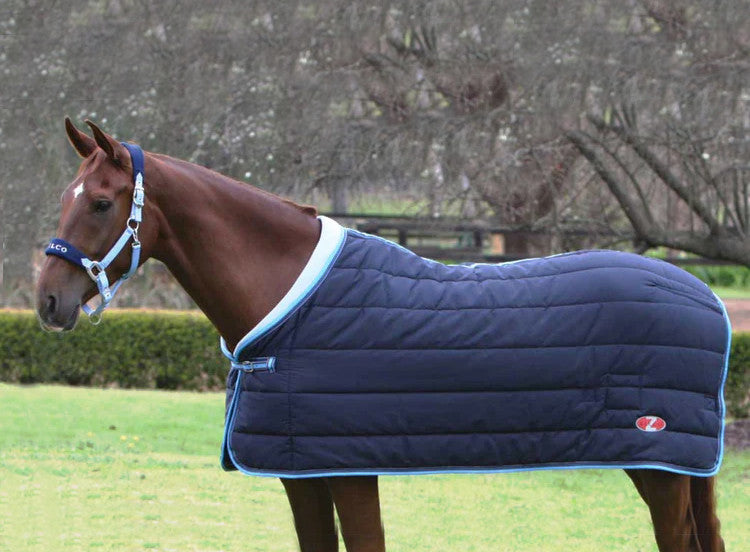Find the perfect horse cover
Selecting the right horse cover can be overwhelming with so many options available and different size measurements. The good news is that we're here to help with choosing the right horse rug, and demystify horse cover jargon!
New Zealand's climate varies greatly, ranging from warm subtropical in the far north to cool temperate climates in the far south. It's essential to choose the correct horse cover to ensure protection from the elements all year round.
Horse Rug Size Chart
Horse Cover Sizing
Horse blankets have different sizing labels depending on which country they are sized for. In New Zealand we measure along the top of the rug from withers to tail. In the UK, USA and AUS, they measure along the bottom of the rug from the center of the chest to the rear
Click your horses size to browse available range
| Horse, Pony and Miniature Horse Rug Size Chart | ||
| Height | NZ Sizing | UK/AUS Sizing |
| Under 6hhs | 1'9" | 3'0" |
| 6hh/26 - 28 inches | 2'0" | 3'3" |
| 7hh/28 - 32 inches | 2'3" | 3'6" |
| 8hh/32 - 36 inches | 2'6" | 3'9" |
| 9hh/36 - 40 inches | 2'9" | 4'0" |
| 10hh/40 - 42 inches | 3'0" | 4'3" |
| 11hh/44 - 48 inches | 3'3" | 4'6" |
| 11.1hh - 12hh | 3'6" | 4'9" |
| 12hh - 13hh | 3'9" | 5'0" |
| 13hh - 14hh | 4'0" | 5'3" |
| 14hh - 14.2hh | 4'3" | 5'6" |
| 14.2hh - 15hh | 4'6" | 5'9" |
| 15hh - 15.3hh | 4'9" | 6'0" |
| 15.3hh - 16.1hh | 5'0" | 6'3" |
| 16.1hh - 16.3hh | 5'3" | 6'6" |
| 16.3hh - 17.1hh | 5'6" | 6'9" |
| 17.1 and over | 5'9" | |
How to measure your horse
Measure your horse
The first step to finding the right size horse cover is to measure your horse's height (hh = hands high).
Steps to measure your horse's height:
- Grab a measuring tape or stick
- Stand your horse on a level surface and hold the tape/stick vertical to the
ground whilst placing the top of the tape/stick at the horse's withers. - Record
this measurement to determine hh. For example, if my horse measures 66
inches, divide 66 by 4. The total is 16.5. In this example, 16 is the
number of hands and the .5 is considered half a hand, or 2 inches. My
horse is 16.2 hh.
Choosing the right weight / fill for your winter horse rugs
The warmth of a cover is determined by the "fill". The fill is measured in grams per square meter. The higher the fill, the warmer the rug. Our rugs come in No Fill, 50g, 100g, 200g and 300g. Choosing the correct weight is critical to keep your horse comfortable through the cooler months.
A thermoneutral zone is the range where the body temperature can be maintained with little to no energy expenditure. Humans have a narrow range of 21 - 28 °C, but horses' thermoregulatory zone is 5 - 25°C. This means it’s important not to rug our horses based on how cold we are, as over rugging can cause serious health issues such as metabolic and thermoregulatory dysfunction.
Tips for choosing a weight for your winter horse rug
- If your horse is clipped, a heavier gram fill may be required.
- Horses can warm themselves up much better than they can cool themselves down when covered, so go for a lighter rug if you are unsure.
- Choose a rug that has easy on/off attachments so you're not standing around in the rain.
- Check your horse regularly to ensure that your horse is not overheating or too cold.
- Take into consideration the age of your horse and their ability to stay warm.
- As a basic guideline, we recommend rugging your horse if temperatures drop below 5-10 degrees, but take the individual needs of your horse into account.
- Ensure your rug is waterproof; no rug at all is better than a wet one.
Here is a guide to choosing a winter horse rug. This is an indicative guide only and factors individual to each horse such as wind chill and your horses age and weight should always be taken into account. For more information, you can check out our article here
| Horse,Pony and Mini Weight/Fill Rug Guide | ||||
| Temperature | Turned out & Unclipped | Turned out & Clipped | Stabled & Unclipped | Stabled & Clipped |
| 15°C + | Nothing, Summer Sheet or 0g fill if raining | Nothing, Summer Sheet or 0g fill if raining | Nothing or Summer Sheet | Nothing, Fleece Rug or Summer Sheet |
| 10°C to 15°C | Nothing, Summer Sheet or 0g or 50g fill if raining | Nothing, Summer Sheet, 50g or 100g fill if raining | Nothing, Fleece Rug or Summer Sheet | Fleece Rug, 50g - 100g fill |
| 5°C to 10°C | Nothing, Summer Sheet or 50g or 100g fill if raining | Nothing, Summer Sheet, 50g or 100g fill if raining | Light weight 100g fill | Medium weight 200g fill |
| 0°C to 4°C | Light or Medium weight 100g - 200g | Light or Medium weight 100g - 200g with neck rug | Medium weight 200g Fill | Heavy weight 300g fill |
| 0°C to -10°C | Medium to Heavy weight 200g - 300g fill with neck | Heavy weight 300g fill with neck rug | Medium or heavy weight 200g to 300g Fill | Medium - Heavy weight 200g - 300g with under rug and/or neck rug |
| Minus 10°C and below | Heavy weight 300g fill with neck rug | Heavy weight 300g fill with neck rug and/or under rug | Medium or Heavy weight 200g - 300g with under rug and/or neck rug | Medium - Heavy weight 200g - 300g with under rug and/or neck rug |
Fitting a Horse Rug for comfort
Now that you know the size of your horse, it is important to remember that although your cover has tabs to tighten or loosen, fitting for comfort is paramount. For example, my horse is 16.2hh, but he may be a little slimmer or larger in the midsection, or he could be longer or shorter than other 16.2hh horses!
How do you choose? Here are a few helpful tips:
- The cover must not be too loose or too tight. If it's too loose, the cover may slip, and your horse will have problems when rolling, sleeping, or moving in general. If it's too tight, the cover may cause unwanted rubbing, chafing, and discomfort.
- The front of the rug should be done up so that the Velcro overlaps completely and the buckles should not be pulling on his chest
- The end of your horse's rug should not be hanging down over his butt; the extra weight will cause the rug to pull on your horse's shoulders.
- To allow freedom of movement and to prevent chafing, adjust the leg straps equally until there is room for the width of one hand between the leg straps and the horse's thigh.
- Check your horse often and always look for any signs of rubbing.
For a more comprehensive guide on rug fit and why it's so important, check out our article from Equine bodyworker, Tash from Hands on Horses here
What is a denier?
Good question! Denier refers to the strength of the cover's outer shell. The higher the denier, the thicker the weave and the stronger the material. The most common rugs will be 600D, 1200D and 1680D. 1200D is a good middle ground and offers superior strength and durability. It will also outlast a 600D rug as well as still being lightweight and breathable when compared to a 1680D
Which lining should I choose? Synthetic vs Cotton
The mostly commonly used lining is nylon/synthetics. Synthetic linings tend to be more durable, lighter, cooler, last longer and tend to slide over the coat better than cotton, preventing rubbing.
While synthetic is better for most horses, cotton does have better wick-ability and if your horse has skin issues then cotton lined may be a better option.
If you already have a synthetic lined rug and don't want to fork out out for a cotton lined, you can always use a Summer Cotton cover as a liner underneath your Turnout Rug.
Make sure your horse's rug is waterproof!
We can't stress this enough, it's extremely important that your rug is waterproof! Your horse is naturally able to fluff up his coat with the individual hairs standing up, rather than laying flat against the skin, trapping air close to his body and thereby insulating him from the cold. A wet rug will inhibit your horse's natural ability to do this, you are better off with no cover at all than a wet one.
Regularly check your horse's rug is waterproof, especially after heavy rain as covers tend to lose their waterproofing as they age. You can buy over the counter products to reproof it or have it professionally reproofed.
We have a 100% Waterproof Guarantee on all our Rain Sheets and Winter Rugs
Choosing your horse's summer rug
Ah, summer! Choosing a rug for summer is simple! Get rid of annoying biting flies, bots, midges, ticks and sunburn! Here are some pointers to help you choose wisely…
- Biting flies and ticks can be a real nuisance to both horse and rider. A mesh sheet such as our Mesh Fly Combo provides optimum air flow with UV protection, as well as protection against flies, bots, and midges. The Zebra fabric is not only awesome, but the pattern is proven to deter flies!
- UV protection is especially
important for light coloured horses who are sensitive to skin cancer and
sunburn or if you want to reduce sun damage to your horse's coat. Check out our Cotton Summer Cooler Combo for the ultimate UV protection.
- Always choose a summer sheet that is lined at the shoulder, neck and tail to prevent rubbing.
- Our favourite is the Summer CrossOver Cooler, which is a great durable sheet for horses that are tough on covers. It is a combination of cotton and mesh; a cotton upper ensures the best UV protection from the sun, while the tough, durable mesh allows optimum air flow to keep your horse cool. These factors combined result in a durable summer sheet that provides both optimal UV protection, is highly
breathable and deters flies with the zebra patterned mesh.
- Summer requires a fly mask, too. Try our Fly Mask that provides UV protection as well as protecting the ears and nose from flies.


